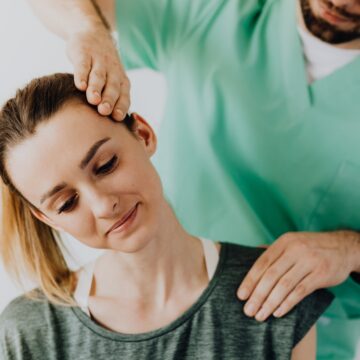
- Tendinitis, also referred to as tendonitis, is the inflammation of a tendon which results from overuse, repetitive motions or direct injury.
- Tendonitis is common among adults who do a lot of sport, and perform tasks by routine.
- While the condition affects any of the tendons in the body, the more common types include Achilles tendonitis, jumper’s knees or golfer’s elbow.
Tendinitis, also called tendonitis, is an acute condition where tendons become inflamed. This inflammation can cause pain, limited range of motion and flexibility, and reduced muscle strength where the tendon is attached to.

Tendons are tough, flexible and fibrous fibers that connect muscles to bones. They come in various shapes and sizes and can withstand tension. Tendons are similar to ligaments in a way that they are both made of collagen. Ligaments connect one bone to another at a joint, while tendons attach muscles to bones.
Swollen tendons are often painful. The pain can be felt at the point where the tendon attaches to the bone or where the muscle and tendon connect.
Common Causes of Tendonitis
Tendonitis is usually caused by the overuse of or sudden, sharp movements like running, jumping or throwing, of a tendon. Most people develop tendonitis because of the type of work they do, certain sports they play, or hobbies and daily activities, all of which involve repetitive movements, which put stress on the tendons.

Direct blows to the tendon as well as inflammatory disorders such as rheumatoid arthritis and osteoarthritis can also contribute to both acute and chronic inflammations of tendons.
Age is also a risk factor, particularly for people over 40. Flexibility is reduced with age making one more susceptible to injury.
Where does it hurt when you have tendonitis?

Tendonitis can occur in any of your tendons, and is classified according to its location. Some of the more common types are:
- Achilles tendonitis, affecting the heel and calf muscle
- Platellar tendonitis or jumper’s knees
- Elbow tendonitis, also known as tennis elbow or golfer’s elbow
- Biceps tendonitis or inflammation of the tendon around the biceps muscle
- Rotator cuff tendonitis, also referred to as swimmer’s shoulder
- Wrist tendonitis, also called bowler’s wrist
Symptoms and Diagnosis
Not to be confused with tendinosis which involves tendon degeneration, tendonitis is normally described as a sudden occurrence of pain and inflammation often related with excessive activity and without injury. Symptoms appear gradually and worsen over time.

The features of tendonitis usually include:
- Swelling, redness, and tenderness
- Pain on the affected area which worsens with movement
- A feeling of cracking or grating when the joint is moved
- A lump or bulge may develop along the tendon
- Stiffness due to swelling
History and physical examinations may help confirm a diagnosis. Imaging tests such as X-rays and magnetic resonance imaging (MRI) may also be required if the cause is not clear. These tests also help check for additional causes of symptoms.
Treatment

Treatment aims to limit the movements that can further cause inflammation. Depending on the location of the tendonitis, simple, daily tasks such as driving or typing may have to be minimized or modified until symptoms are eliminated.
Treatment involves three stages:
- Initial reduction of movement of the injured tendon
- Relieving inflammation
- Rehabilitation of the affected tendon, joint and muscle
Ice is usually best during the first 48 hours of the injury. Over-the-counter ibuprofen and other non-steroidal anti-inflammatory drugs also help with tendon pain and inflammation.

For recurrent or severe symptoms, corticosteroid injections around the tendon may provide short to medium-term relief. However, repeated use may weaken the tendon and increase the risk of a rupture.
Treatment may be supported by physical therapy to manipulate and massage the affected area. Recovery tends to be faster, often with the recovery of the full range of motion.
Physical therapy also helps. Manipulating and massaging the affected area may provide relief and hasten the healing process. Specific exercises also help stretch and strengthen the affected tendon and muscle.
Lastly, keeping fit and avoiding sudden changes in activity levels help lower your risks of tendinitis.
Via Very Well Health
